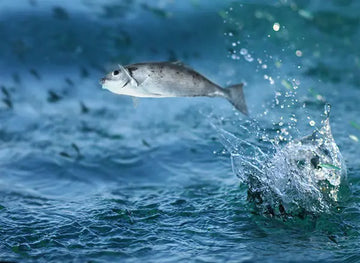The Problem
Climate change, driven by global warming and other human-induced factors, is significantly impacting fish stocks around the world. Here are some key challenges related to seafood depletion across Indian shores:
- Climate-Induced Stock Shifts: Rising temperatures, ocean acidification, and other climate-related changes are causing fish species to shift their distribution and abundance. Some species are moving to more suitable habitats, while others are declining in numbers.
- Overfishing: Even without climate change, over-fishing is a problem. However, climate-induced shifts can exacerbate over-fishing. When fish abundance decreases in certain regions, fishers unintentionally over-exploit stocks. Simultaneously, in newly abundant areas, over-fishing may occur due to inadequate catch limits.
- Protected Areas and IUU Fishing: As fish stocks shift, they may end up within marine protected areas or other static zones where fishing is prohibited. Fishers might be tempted to venture into these areas, potentially harming vulnerable resources. Illegal, unregulated, and unreported fishing (IUU fishing) can also occur across jurisdictional boundaries.
- Metabolic Stress on Fish: Warmer waters can stress fish metabolically, affecting their reproduction and food availability. Zooplankton, essential fish food, may decline due to rising temperatures.
The Solution: Inland Fisheries 🎣
Inland fisheries offer a promising solution to address protein needs and boost India’s food security. Here’s why they matter:
- Abundant Resources: India’s freshwater resources include rivers, canals, ponds, lakes, reservoirs, and floodplain wetlands. These cover approximately 1.95 million KM of rivers and canals, 3.54 million hectares of reservoirs, 2.4 million hectares of ponds and lakes, and 0.8 million hectares of floodplain lakes.
- Small-Scale Fisheries: The majority of fish production in India comes from the small-scale sector. These fisheries are characterised by diverse operations, varying by season and geography. They play a crucial role in livelihoods and nutrition, contributing about 1.24% to National Gross Value Added (GVA) and 7.28% to agricultural GVA.
- Historical and Cultural Significance: Fish and fisheries have deep roots in Indian culture and mythology. Ancient scriptures and epics mention fish, and the tradition of fishing continues to shape communities and livelihoods.
- Sustainable Approach: Inland fisheries can be managed sustainably, providing essential animal protein and micronutrients. They align with the United Nations’ Sustainable Development Goals and contribute to global food security.
Conclusion
To address seafood depletion, we must prioritise adaptive fishery management, protect vulnerable areas, and promote sustainable practices. Inland fisheries, with their rich history and potential, can play a vital role in securing India’s protein needs and contributing to a more resilient and food-secure future.
Bibliography:
- FAO. (2018). The State of World Fisheries and Aquaculture 2018. Food and Agriculture Organization of the United Nations.
- Gupta, M. V., & Acosta, B. O. (2004). An Overview of Inland Capture Fisheries and Their Importance to Rural Livelihoods and Food Security in Developing Countries. FAO Fisheries Technical Paper No. 419.
- IPCC. (2019). Special Report on the Ocean and Cryosphere in a Changing Climate. Intergovernmental Panel on Climate Change.





